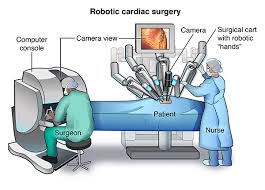Coronary bypass surgery performed in world class hospitals in India is a procedure to allow blood to flow to your heart muscle despite blocked arteries. Coronary bypass surgery uses a healthy blood vessel taken from your leg, arm, chest or abdomen and connects it to the other arteries in your heart so that blood is bypassed around the diseased or blocked area. After a coronary bypass surgery, normal blood flow is restored. Coronary bypass surgery is just one option to treat heart disease.
Just like all the other organs in your body, your heart needs blood and oxygen to do its job. Coronary arteries snake across the surface of your heart, delivering a constant supply of blood and oxygen to the heart muscle. When one or more of these arteries become narrowed or blocked, blood and oxygen are reduced and heart muscle is damaged. Coronary bypass surgery can minimize this damage.
Today Cardiology treatment in India has come up as a suitable option in order to get rid of any of the heart defects as the cost in India of any of the treatments is the best and that too at rates which are absolutely affordable. Because of these benefits of choosing in India, any of the treatments, many foreigners have come down here in order to solve their trouble of heart diseases.
• People diagnosed with arterial blockage or heart damage are recommended with the Coronary Artery Bypass Graft Surgery.
• People suffering from severe chest pain or angina due to the arterial blockage are recommended with the Coronary Artery Bypass Graft Surgery.
• People suffering from complicated conditions such as diabetes & high blood pressure are recommended the Coronary Artery Bypass Graft Surgery to reduce the risk of heart attack.
Procedure for Coronary Bypass Surgery
During a Coronary Artery Bypass Graft Surgery (CABG), the blood flow is re-routed around the clogged artery by detaching a long segment of an artery from the chest wall, arms or leg veins. Thereafter, the new artery is grafted to the clogged area of the coronary artery. Through the newly attached channel, blood gets unhindered route to flow to the heart muscles. This procedure is known as Coronary Artery Bypass Surgery. Depending upon the number of blocked coronary arteries, a patient may undergo more than one bypass graft.
After surgery, there will be a short stay (1 to 2 days if there are no complications) in the intensive care unit (ICU). In the ICU, you will likely have:
• Continuous monitoring of his or her heart activity.
• A tube to temporarily help with breathing.
• A stomach tube, to remove stomach secretions until the person starts eating again.
• A tube (catheter) to drain the bladder and measure urine output.
• Tubes connected to veins in the arms (intravenous, or IV, lines) through which fluids, nutrition, and medicine can be given.
• An arterial line to measure blood pressure
• Chest tubes, to drain the chest cavity of fluid and blood (which is temporary and normal) after surgery.
Some of the potential benefits of Coronary Bypass Heart Surgery (CABG) include :
• Lower risk of stroke
• Lower death rate
• Less need for transfusion
• Less heart rhythm problems
• Less injury to the heart


